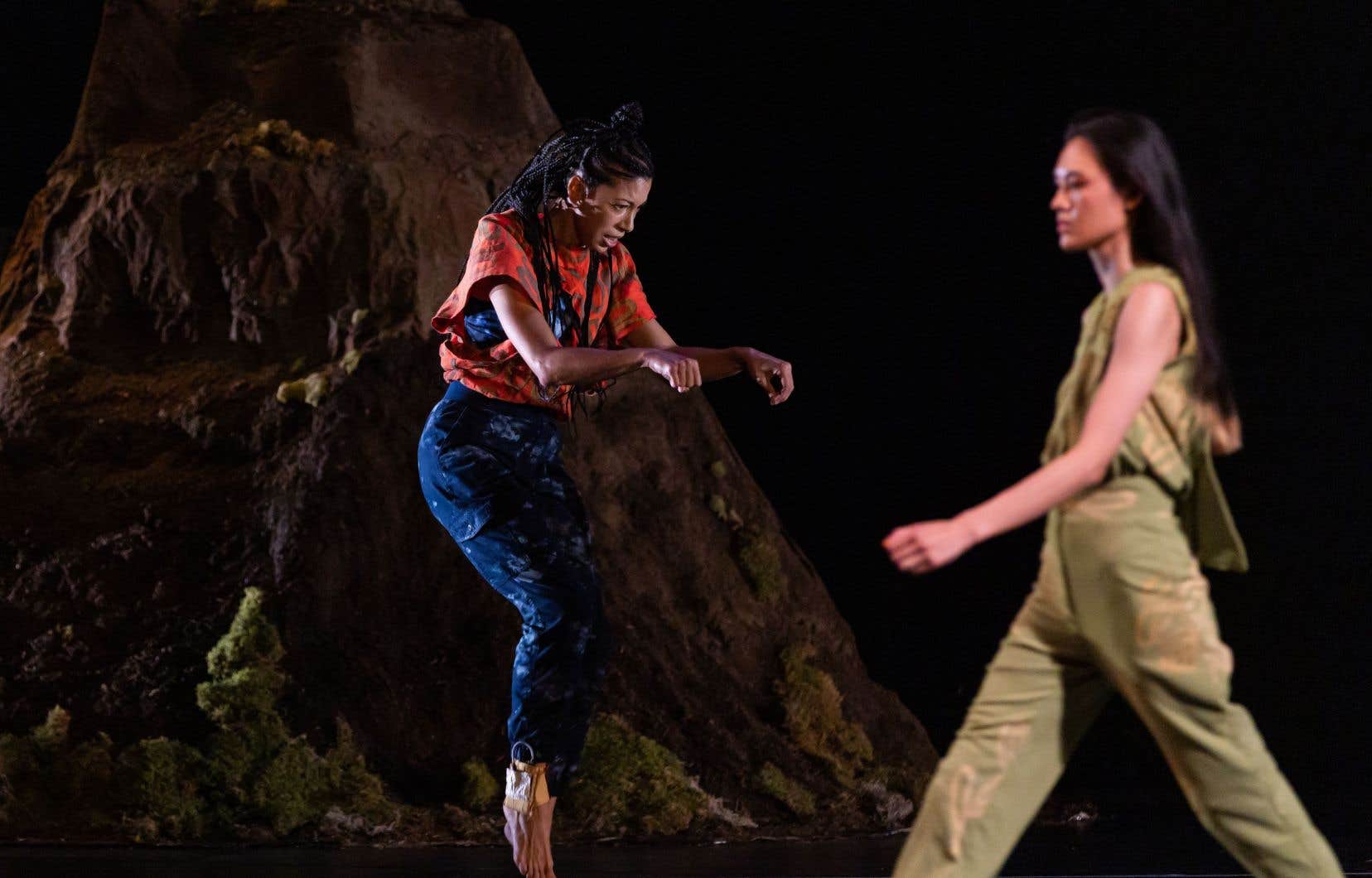Space and time are two of the themes that artists Emily Johnson and Amrita Hepi explore in their works presented at the 18e edition of the Festival TransAmériques (FTA). Both Indigenous, Yup’ik (Alaska) for Mme Johnson, and Bundjalung (Australia) and Ngāpuhi (Aotearoa/New Zealand) for Mme Hepi, they value the importance of nature and ancestral stories in their work.
To begin their creations, Emily Johnson and Amrita Hepi both questioned their origins and the past, but with an eye towards the future. “We aspire to a better future, so this work, Being Future Being: Inside/Outwardsallows us to consolidate our collective efforts to move in this direction,” explains Mme Johnson. For meme Hepi, it was the beginnings that caught his attention. “ Rinse talks about the endless pursuit of beginnings, of beginnings, and how the beginning of something can ultimately already turn out to be something else. How to start? And also how to continue? “, she asks.
According to Amrita Hepi, the question of identity, particularly indigenous, is always interesting. Although it is not part of his work Rinse, she continues to question this question. “The omnipresence of colonialism constantly asks me to provide proof of my identity or a unique allegiance to a country, to a place. It’s boring. This is why dance, art, storytelling are a good way to counter this,” she explains. For meme Johnson, his Indigenous identity gives him power, that of celebrating and coming together. “Our relationships, between humans, but also with nature, are full of power. Picking, pouring, planting, cooking, these are all forms of power. And all this power leads us to protect the lands, the oceans, because it is all part of our family. The earth, the air, the trees, the creatures, the animals, the ancestors and even the thoughts! Our ways of thinking come from us, but also create something else, therefore are part of this whole,” she specifies.
For both artists, their Indigenous identity is intrinsic to their work and is found in various elements, without necessarily wishing to identify them as such. “I think a lot of Indigenous people have a real understanding of social history and relationships with places, land and other people. We know where we are, according to the seasons, spiritually, with warmth, family, but also the places from which we do not come,” she says. So, to create, Mme Hepi is inspired by time and space. “I define choreography as the organization of time and space. Dance is a way to learn history, stories,” she adds. Thus, this notion of time is very significant for the artist. “While not specifically “Indigenous,” I have come to believe that history, hybrid storytelling, and this collage of time across different periods are skills that the indigenous people I admire possess in as storytellers. » It is also in line with this observation that she has integrated many words into her work. Indeed, during the creation, she surprised herself by speaking “much more than usual” when she was improvising. “So the movement could say more than the words, and the words could complicate the movement to create an image that I found interesting,” she remembers. So they stayed. I like to think that the words create a certain introduction, of repetition or inevitability, and that the movement creates a different atmosphere around the text, but that they happen within each other. »
Seek the authentic and share it
The gesture research for Emily Johnson and for Amrita Hepi involves a lot of notes and improvisation. Thus, they both let themselves be carried away by the sensations that their movements create. “I always try to understand in depth what a movement means, to clearly define the intentions behind it. And that’s where it gets interesting,” explains M.me Johnson. For meme Well, creation goes through phases of ease as well as moments of frustration. “To help me shape all this, I almost always surround myself with an external witness, real or imaginary, but my gestures come from improvisation, habits, training, things I look at, etc. . “, she says.
Another point in common: the two artists perform in their room. “I feel concentrated, charged with a lot of emotion and a little different each time, depending on the audience,” describes Mme Hey. On M’s sideme Johnson too, the performance is different every night. “It takes me to very different levels of endurance. This piece is a process of survival, and through it, a process of healing too. Not just for me, but for the rest of the world too. So sometimes rage comes out, and other times, sparks of joy. We go through a lot of things, which we share with the public, because my body has to get all this out,” she says.
Emily Johnson is also very interested in post-performance, how to have a longer-term impact through stage creation. “People come to see the performance, it’s cool. We spend time together. During the piece, I hope to generate different forms of provocation, but the important thing is also what happens afterwards. What form can we create to help it continue to resonate after the show, how can we have a real impact, provoke change? I like that this idea is collective, that we all want to change the parameters together, she concludes. We need to move on, to bring something else, to stop the extractions, the genocides. How can we still do this? »
